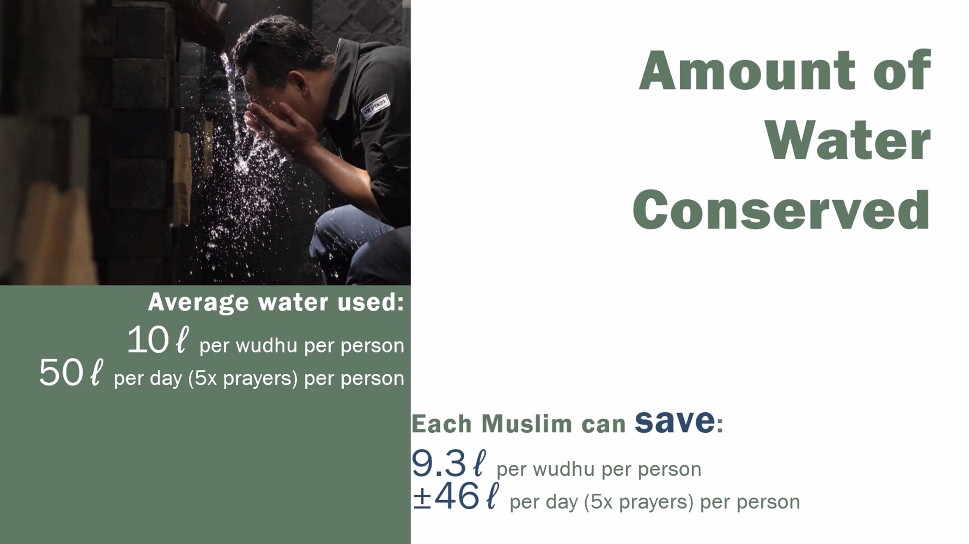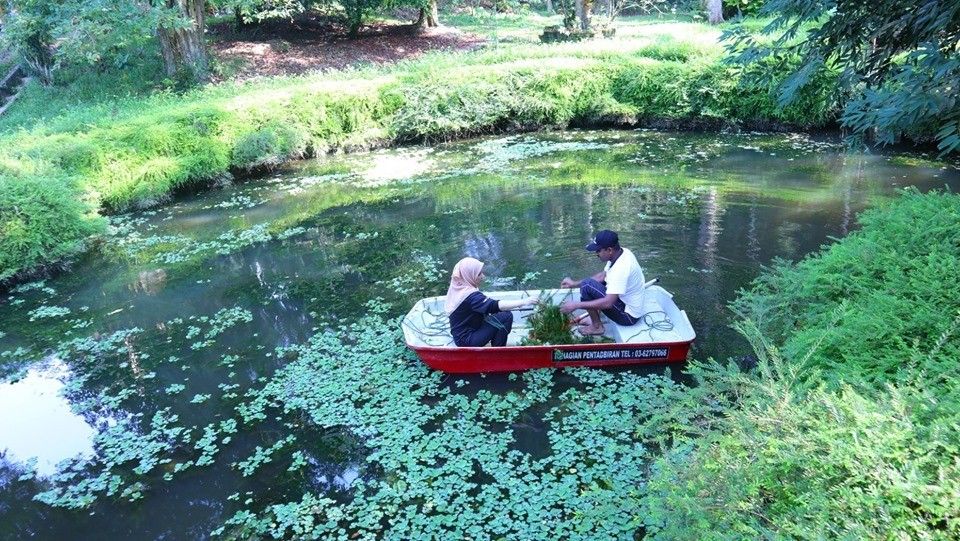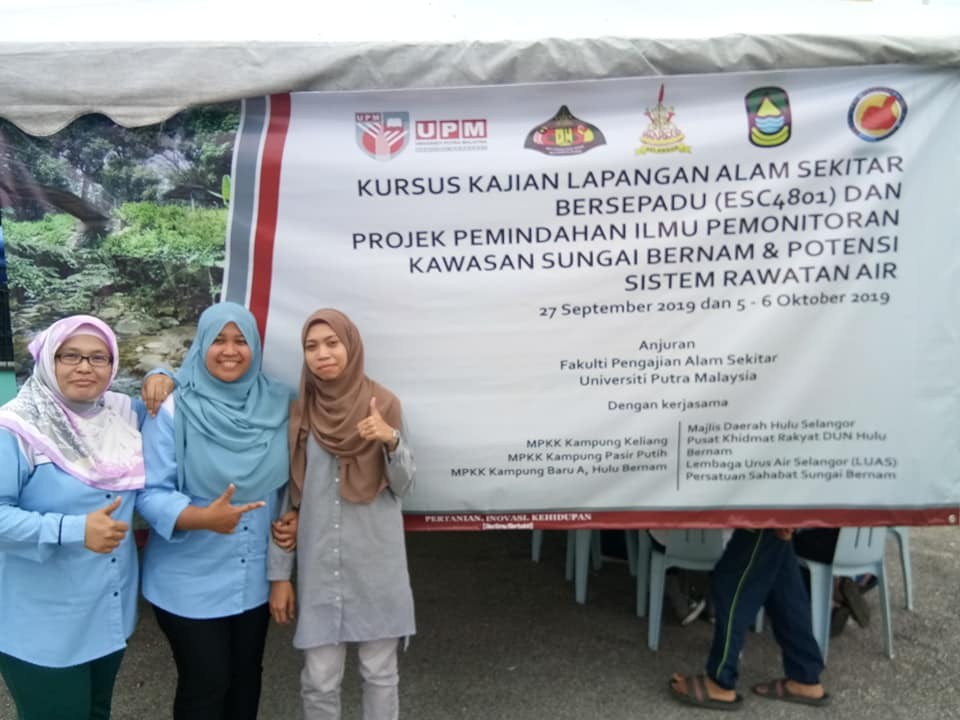
Valuing Water: Water Waste And Wastewater
World Water Day is held annually on 22nd March. The theme for this year’s celebration addresses the question of the value of water. Valuing water means balancing the benefits and risks associated with water in all aspects, such as economic, social, ecological, cultural, and religious perspectives.
In Malaysia, the river is our main source of treated water. Water is a finite resource, and as our population increases, it becomes more limited and competitive. More than half of the water is used in the agricultural and industrial sectors, including electricity generation. People always assume that taking care of this resource falls under the responsibilities of the government and big industries; however, these responsibilities should also start from home.
What can we do?
We must explore the actions, we as an individual, can do to minimize water waste and manage wastewater from our households. Here are some of them:
a) Tracking the use of water to make the most of it.
It is important to understand and account for the available water. Water accounting shows where and how much water is available and being used. One of the tasks that I have assigned to my students is to think of one activity that they can simply do at home or work to decrease the use of water.
For example, we can track the use of water during the ablution ritual by the Muslims to minimize water waste and eventually save water resources. It has been estimated that a person performing ablution can save 9 liters of water each time if it is done correctly and water is used sparingly. This will amount to at least 45 liters of water saved per person every day.
Moreover, we should recognize the limit to use water; when it is enough and necessary. For example, is rinsing the dishes once enough? Is rinsing more than three times necessary? Is one glass of water sufficient for gargling after brushing the teeth, or do we need to keep the tap water running?
Water can also be saved when flushing the toilets. You can fill a 1-liter bottle with water and cap it. Put it into the toilet tank, and it can save 1 liter of water from the original amount used to flush. A family of five, let say, will at least flush 10 times a day, and by putting the 1-liter bottle of water into the toilet tank, the family can save up to 10 liters of water each day. Over a month, the family can save 300 liters of water or 0.3 m3/month.
b) Know what not to waste
Let’s look at the things we rinse down the drain. No matter what types of urban drainage and sewer systems we have, the runoffs will eventually end up in the river. Therefore, it is essential to know what to pour down the drain and what to flush down the toilet. Used cooking oil is better collected and recycled compared to discharging it into the drain. When oil or grease is poured down through the sink, it can damage the plumbing systems by coating the pipes, causing clogs and blockages. When the oil hardens, it can be quite expensive to remove it, especially in a closed drainage system. Pouring hot water will melt the oil, but it is only temporary. Nonetheless, further down the drain, it will cool down and solidify again. Although detergent would provide a short-term solution but the oil or grease will still solidify further down the plumbing system.
Other products that should not be discharged into the drainage include viscous substances, corrosive products, and extremely hot liquids. Discharging excessive water into a sewer system will dilute the amount of solids normally received in the sewerage treatment plant.
c) You as an educator
Education plays a major role in shaping the community’s view on water management and pollution. UPM lecturers help to disseminate knowledge and expertise back into the community. In the Department of Environment, the current bachelor's degree program has introduced an integrated environmental field study course. In this course, students would apply their knowledge and techniques that they have learned to solve environmental issues in communities and industries. In 2019, the students collaborated with the local community to monitor nutrient pollutants in Sungai Bernam and suggested appropriate treatments.
Nonetheless, teachers and lecturers are not the only educators. You can be an educator, too. We can learn about water and pollution through our readings, attending classes, and involvement in community projects.
These suggestions are not limited to what has been listed. We can be more creative in providing solutions for our water issues in our own homes and community. A small adjustment to our routines can bring significant benefits to the environment. We do not inherit these limited resources from our ancestors; we borrow them from our children. Therefore, it is important to have clean water available and sustainable for our future generations.
In Malaysia, the river is our main source of treated water. Water is a finite resource, and as our population increases, it becomes more limited and competitive. More than half of the water is used in the agricultural and industrial sectors, including electricity generation. People always assume that taking care of this resource falls under the responsibilities of the government and big industries; however, these responsibilities should also start from home.
What can we do?
We must explore the actions, we as an individual, can do to minimize water waste and manage wastewater from our households. Here are some of them:
a) Tracking the use of water to make the most of it.
It is important to understand and account for the available water. Water accounting shows where and how much water is available and being used. One of the tasks that I have assigned to my students is to think of one activity that they can simply do at home or work to decrease the use of water.
For example, we can track the use of water during the ablution ritual by the Muslims to minimize water waste and eventually save water resources. It has been estimated that a person performing ablution can save 9 liters of water each time if it is done correctly and water is used sparingly. This will amount to at least 45 liters of water saved per person every day.
Moreover, we should recognize the limit to use water; when it is enough and necessary. For example, is rinsing the dishes once enough? Is rinsing more than three times necessary? Is one glass of water sufficient for gargling after brushing the teeth, or do we need to keep the tap water running?
Water can also be saved when flushing the toilets. You can fill a 1-liter bottle with water and cap it. Put it into the toilet tank, and it can save 1 liter of water from the original amount used to flush. A family of five, let say, will at least flush 10 times a day, and by putting the 1-liter bottle of water into the toilet tank, the family can save up to 10 liters of water each day. Over a month, the family can save 300 liters of water or 0.3 m3/month.
b) Know what not to waste
Let’s look at the things we rinse down the drain. No matter what types of urban drainage and sewer systems we have, the runoffs will eventually end up in the river. Therefore, it is essential to know what to pour down the drain and what to flush down the toilet. Used cooking oil is better collected and recycled compared to discharging it into the drain. When oil or grease is poured down through the sink, it can damage the plumbing systems by coating the pipes, causing clogs and blockages. When the oil hardens, it can be quite expensive to remove it, especially in a closed drainage system. Pouring hot water will melt the oil, but it is only temporary. Nonetheless, further down the drain, it will cool down and solidify again. Although detergent would provide a short-term solution but the oil or grease will still solidify further down the plumbing system.
Other products that should not be discharged into the drainage include viscous substances, corrosive products, and extremely hot liquids. Discharging excessive water into a sewer system will dilute the amount of solids normally received in the sewerage treatment plant.
c) You as an educator
Education plays a major role in shaping the community’s view on water management and pollution. UPM lecturers help to disseminate knowledge and expertise back into the community. In the Department of Environment, the current bachelor's degree program has introduced an integrated environmental field study course. In this course, students would apply their knowledge and techniques that they have learned to solve environmental issues in communities and industries. In 2019, the students collaborated with the local community to monitor nutrient pollutants in Sungai Bernam and suggested appropriate treatments.
Nonetheless, teachers and lecturers are not the only educators. You can be an educator, too. We can learn about water and pollution through our readings, attending classes, and involvement in community projects.
These suggestions are not limited to what has been listed. We can be more creative in providing solutions for our water issues in our own homes and community. A small adjustment to our routines can bring significant benefits to the environment. We do not inherit these limited resources from our ancestors; we borrow them from our children. Therefore, it is important to have clean water available and sustainable for our future generations.

Figure 1. The amount of water that can be saved if the ablution is performed correctly and water is used sparingly. Taken from the student’s presentation.

Figure 2. Students clearing up a eutrophic pond in FRIM.

Figure 3. The involvement of lecturers from UPM help to share the knowledge and expertise back with the community.
